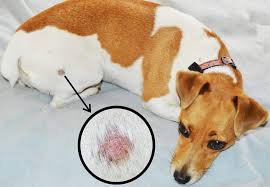What is ringworm in dogs?
From my years of caring for dogs and other animals, I’ve learned that ringworm is not actually a worm but a fungal infection caused by a stubborn fungus similar to what causes athlete’s foot in humans. Many pet parents first notice signs like round patches of missing fur or scaly skin, which can easily spread if not handled properly. This condition can be a real challenge, especially since the fungus is so resilient. Acting promptly and familiarizing yourself with early signs makes all the difference. A quick visit to your veterinarian can help address the infection and start treatment to prevent it from moving to other pets. Taking swift action and staying consistent in your battle against ringworm will go a long way in helping your furry friend recover and stay healthy.

What does ringworm look like on a dog?
When I first noticed my canine companion scratching more than usual, I discovered that ringworm can show up in many ways depending on the condition of the skin and hair. You might see grey, scaly patches or bald spots that look irritated and red with small lesions. Sometimes the symptoms appear as dry, brittle fur or inflamed areas that form a rash. In some pups, the infection shows circular or patchy hair loss, with scales like dandruff, or even scabs and darkened, reddened skin. Around the folds, claws, and nails, it can cause itchiness that makes your dog uncomfortable. If you notice these signs, booking a veterinary appointment right away will help your pup get treated before the condition worsens.
How is dog ringworm diagnosed?
When a dog shows signs of ringworm, a veterinary visit becomes essential to diagnose the infection accurately. As a pet owner, I’ve learned that a veterinarian will start with a thorough physical examination of the affected areas, checking for circular patches, hair loss, redness, crusting, and scaling on the skin. To confirm the diagnosis, the vet might use a Wood’s lamp, which shines ultraviolet light over the fur; some infected hairs may fluoresce, showing the presence of a fungal infection. For a more definitive result, they can perform a fungal culture by collecting samples of hair and skin to grow and identify the fungus responsible for the condition. Based on these findings, the vet will create an effective treatment plan to ensure your dog’s recovery and stop the infection from spreading to other dogs or pets.
What is the treatment for dog ringworm?
In my experience treating dogs with ringworm, the treatment often depends on how severe or widespread the infection is. Veterinarians usually prescribe antifungal medications, either oral or topical, to combat the fungal infections and promote healing. For mild or localized cases, treatments like creams, shampoos, or medicated bathing help remove spores from the coat and skin. Regular care and hygiene make a huge difference — with consistency, most dogs recover fully and regain a healthy coat that shines once the infection clears.
Is it possible to stop the spread of ringworm in dogs?
From what I’ve seen, ringworm can endure for several weeks or even months if not handled carefully, which is why stopping its spread is so important. This fungal infection passes through direct contact with an infected animal or a contaminated surface covered in spores. To control it, every surface your dog touches must be cleaned properly, including fibers in the carpet, bedding, and even curtains. The fungus can survive on these materials for a long time, so maintaining a strict cleaning routine is key to preventing future infections and keeping your home safe.
Do I need to quarantine my dog if they are being treated for ringworm?
When my four-legged friend had ringworm, I quickly learned how easy it is for this condition to spread — even an asymptomatic carrier can release spores into the environment. These spores are highly resilient and can survive for weeks, so it’s best to confine your affected dog to one room during treatment. Keeping your pup contained makes cleaning easier and helps reduce the risk of others getting reinfected. Regularly wash bedding, disinfect grooming tools, and sanitize all living areas — this step is essential in eliminating the virus from your home. While treating your dog, stay consistent with your ongoing care until the symptoms clear and the skin fully heals.
How long should I quarantine a dog with ringworm?
When my dog was quarantined for ringworm, my veterinarian recommended keeping isolation for at least six weeks to stop the infection from returning. Though it can feel like a long battle, this process makes the treatment easier and more inexpensive than dealing with recurring cases later. During this time, regular monitoring of the skin condition is important so your vet can make any adjustments to the plan if needed. Always follow the medical advice and informational guidance from your vet — schedule an appointment if you’re unsure how to diagnose or manage your pet’s health. Keeping pets isolated helps ensure the infection stays controlled until full recovery.
How can I tell if a dog has ringworm?
Ringworm in your dog may not present itself in such a noticeable manner, so you should keep an eye out for the following symptoms:
- Inflamed, red skin rash.
- Scales that look like dandruff.
- Itchiness (pruritus)
- Dry, brittle hair with hair follicles that break easily.
- Circular or patchy areas of hair loss (alopecia)
How do I treat my dog for ringworms?
When dogs are treated for ringworm, the treatment usually involves a combination of topical therapy and systemic medication. In my experience, creams, ointments, or shampoos work well on mild infections, while more stubborn cases may need the administration of antifungal drugs by mouth. This layered approach helps target the infection both on the skin and inside the body, ensuring a faster and more complete recovery. Consistency and patience are key — stick with the routine your vet recommends to make sure your dog heals fully.
Can I touch my dog if he has ringworm?
When I first saw ringworm on my dog, I was surprised to learn how easily it can spread to people. This infection is contagious and can be passed through simple touch with an infected animal. If your skin is healthy, you might not catch it, but even a small scratch, graze, or wound can increase your risk. Those who suffer from a condition like eczema should be extra careful, as their skin is more sensitive to this fungus. Keeping your pet’s bedding clean and washing your hands after contact helps prevent the spread.
Will dog ringworm go away by itself?
When my pet first showed signs of ringworm, I learned from my veterinarian that it rarely disappears without help. To treat the infection and keep your dog comfortable, you’ll need to use antifungal shampoos, creams, or even pills depending on how severe it is. For long-haired animals, clipping the fur around the affected areas can help the skin dry faster and heal properly. Regular cleaning and gentle care make a big difference in recovery and prevent the fungus from spreading.
What kills ringworm overnight?
From my experience caring for pets with ringworm, there’s no magic fix that works overnight, but antifungal medications can treat it quickly when used correctly. Your doctor or pharmacist can guide you toward the best treatment options and provide helpful information on how to apply them safely. Acting early and following expert advice ensures your dog heals faster and avoids the infection spreading to other pets or people.

Pingback: 8 Vet-Approved Home Remedies for Your Dog